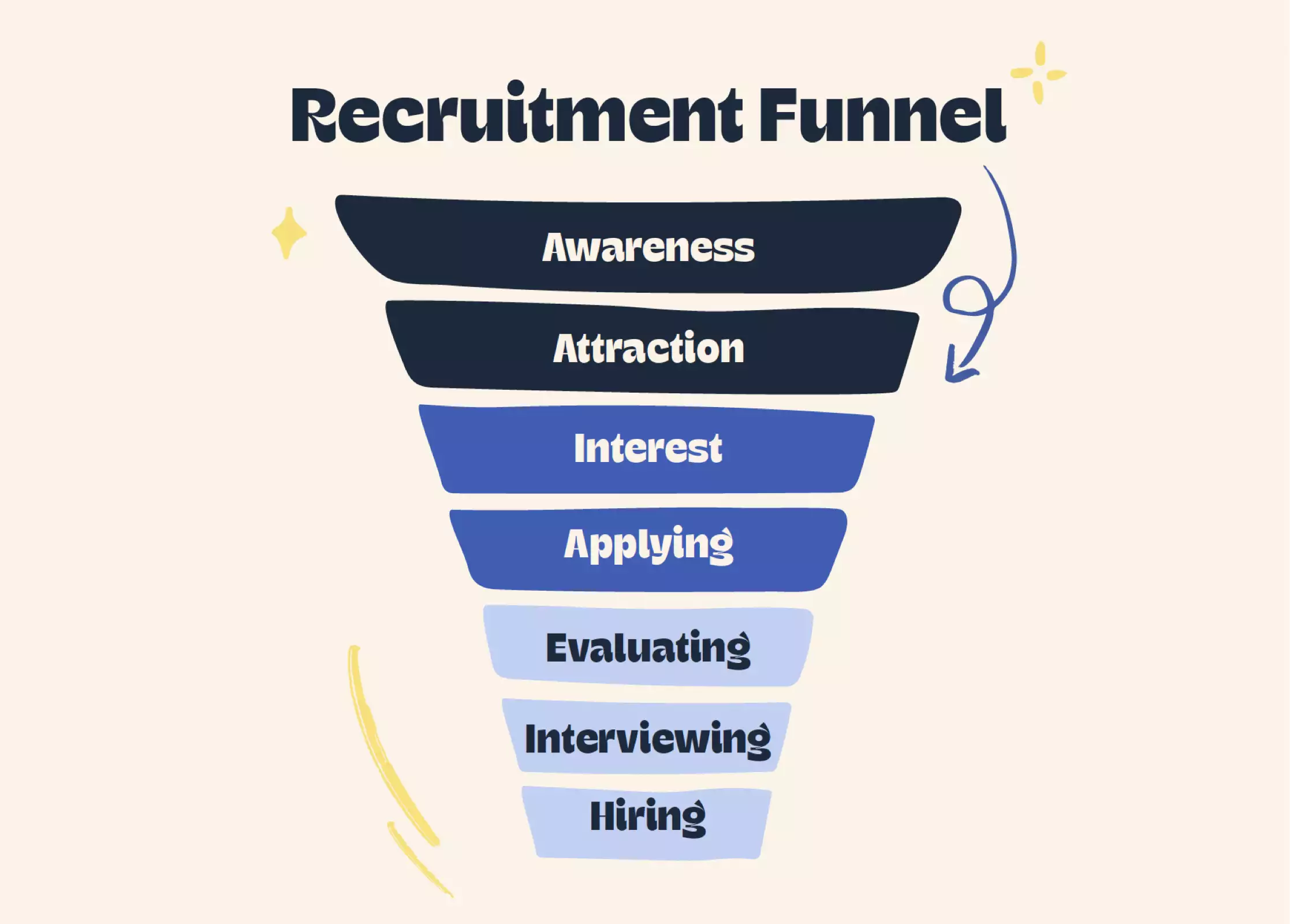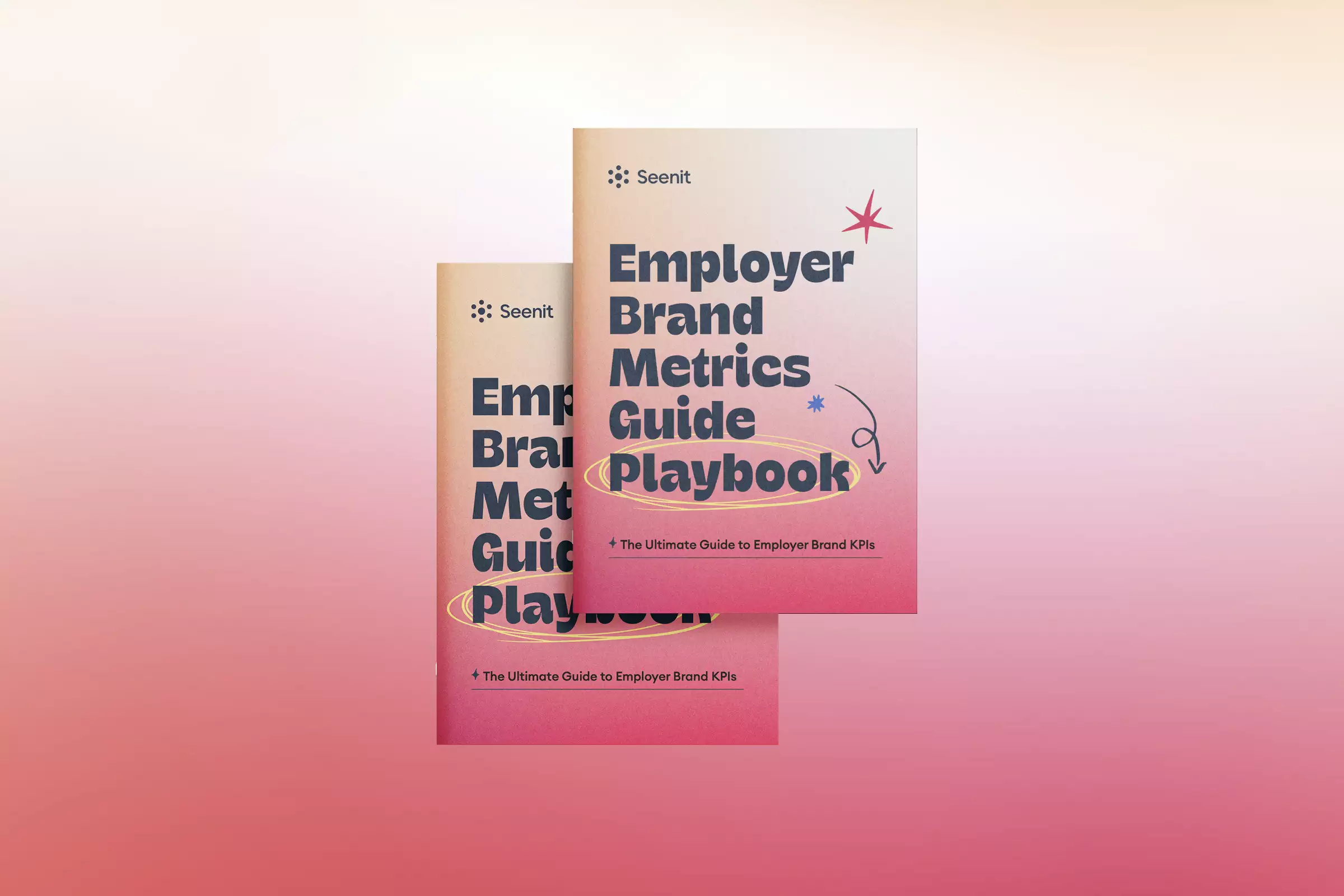Introduction
The ripples of a robust and realistic Employer Brand reach far and wide, seeping into all aspects of an organisation, showing the world – and prospective employees – who you are, what your values are, and what you do.
Getting Employer Brand right elevates your business head and shoulders above the competition, placing you at the top of potential recruits’ lists and keeping your existing employees engaged, loyal, and productive.
So, why is Employer Brand important? Current and would-be employees want to be happy and to know, first-hand, what the workplace they may spend much of their life in, is really like. With plenty of online information, they frequently delve into reviews, employee ratings, attrition rates, and employee referral stats, hungry for information to help them decide whether to apply, stay, or seek out something that better resonates with their values.
In a nutshell, Employer Brand reflects a company’s overall brand message, vision, and mission. However, a job seeker, in particular, will have a different view of these aspects of the brand. And this is where employee content can help. Employee-generated content, or EGC, will help you to get your Employer Brand story out there, making it easy for those thinking about applying for a role to get an authentic view of what it’s like to work there.
We’ve discovered that 42% of employees seek employee video content to get a feel for company culture, leadership and everyday life. This is a 60% increase from 2021, confirming that video is becoming an employee’s favourite way of connecting with brands.
As recruiters know, attracting, retaining, and engaging employees are chronic pain points in talent acquisition. Still, these complex areas are all easier to address once your Employer Brand strategy is well-defined. To achieve this, however, means you need to know what you need to know – and be able to measure it. This guide takes you through the top 10 metrics you must track to build your Employer Brand successfully. We’ll also explain how employee-generated content can help with this.
Top 10 KPIs to track in 2024
Being clear on the key performance indicators (KPIs) related to Employer Brand gives you the information you need to show you where to improve and track progress. Keep in mind that the KPIs we recommend should reflect your Employer Brand strategy and wider company goals.
1. Employee retention
This is a measurement relating to your organisation’s ability to retain its employees over a given timeframe. When churn is high, those within the organisation, as well as those looking at it as a possible workplace, will wonder why this is the case.
When it comes to metrics, HR management systems (HRMS) can measure turnover rate, promotion rate, and the average duration employees stay at your organisation. Look into turnover reports and hold exit interviews to determine why people leave. If you put changes in place, compare the results to see if your actions have slowed down attrition or not.
On the flip side, investing in employer brand can cut turnover by 28%. One way of doing this – while boosting retention – is to give employees the opportunity to use their voices. EGC can help foster a sense of belonging and importance in employees. By inviting colleagues to be part of your organisation’s storytelling process, you show that you care and value what they say, and are happy for them to share their workplace stories far and wide.
Example KPIs to track:
- Overall retention rate
- Percentage of employees that pass probation
- Percentage reduction in attrition after 12 months
2. Employee Net Promoter Score
An employee Net Promoter Score (eNPS) is a measure of how likely your employees are to recommend your organisation to others as a good place to work. One way to measure eNPS is through anonymous eNPS surveys. These can be sent out annually or biannually via platforms such as SurveyMonkey and Typeform – lots of HR management systems (HRMS) will also send these surveys out. Using these regularly will enable you to capture trends over time.
A typical question might be along the lines of: ‘How likely are you to recommend us, as a place to work, to your family and friends?’ Employees can answer the question on a scale of 0 to 10, with 0 being the least likely to recommend your company and 10 being the most likely.
Ratings of 0-6 are considered ‘detractors’, 7 and 8 are ‘passive’ with 9 and 10 dubbed ‘promoters’.
To calculate your eNPS, subtract the percentage of detractors from the percentage of promoters (eNPS = % of promoters – % of detractors). The percentage of passives is not included while calculating the score. A high eNPS score – above 50 – is considered excellent and is an indicator of strong employer brand.
Employee-generated content gives people the opportunity to share their positive experiences. Empowering employees in this way will improve overall employee satisfaction and loyalty, boosting the eNPS – and your Employer Brand.
Example KPIs to track:
- eNPs score
- eNPS survey participation
- Percentage increase of eNPS score
3. Application rate
Tracking the number of applications for vacancies reflects the attractiveness of the company to potential hopefuls.
Track the number of applications for each job you post using an Application Tracking System (ATS) and note the number of qualified candidates who come forward for each vacancy. See how your organisation’s metrics compare with industry benchmarks.
It can help to think of this in terms of a recruitment, or talent funnel. Measure career site traffic (more on that soon), through to hired candidates, and track the conversions at each stage.

Organisations with strong Employer Brand experience a 50% increase in qualified applicants. Including employee-generated content throughout every stage of the recruitment funnel can help attract candidates who resonate with your company culture.
Example KPIs to track:
- Time to hire
- Cost per hire
- Offer acceptance rate
4. Employee advocacy
Whether an experience is excellent or not so good, people talk. And, employee advocates are three times more likely than other sources to be trusted by potential job applicants. To monitor what your employees are saying about your company, use social media monitoring tools such as Hootsuite and Brandwatch and encourage your talent to share company content. Monitoring tools help you to keep track of employee testimonials, social shares by employees, and can measure engagement with the latter.
Tools like Seenit provide employees with a way to share work-related content, giving those curious about the company a first-hand video testimonial, while enhancing your Employer Brand.
Example KPIs to track:
- Percentage of employees sharing content
- Percent of employees who have participated in your advocacy programme in the past 90 days
- Engagement rates of employee shared content
5. Career site traffic
By measuring the number of people who visit your company’s careers page, you’ll be able to understand better how appealing your organisation is to prospective employees.
Metrics to delve into include the number of visits, page views, bounce and conversion rates, and the duration of time spent on your career page. You may find tools such as Google Analytics useful for the latter.
We’d also recommend that you use free tools like Google Lighthouse to run an audit on your career site to ensure it’s performing well for Search Engine Optimization (SEO), Accessibility, and Performance.
Seenit has found that a well-optimised career site can increase traffic by up to 200%. Employee-generated content is a fruitful way to highlight the attractiveness of the business, driving up applications and engagement.
Example KPIs to track:
- Percentage increase in career site applications
- Percentage increase of application click through rate
- Career site traffic
6. Brand awareness
Evaluating your company’s brand awareness will show you how potential job applicants recognise your business as an employer.
Carrying out brand recognition surveys and tracking search volume statistics relating to the company and the brand sentiment – feelings your brand inspires – will reveal how well your company is known and what people are saying about it.
Getting this right is crucial, as companies with a high brand awareness are twice as likely to receive applications from those coveted cream-of-the-crop candidates.
To keep abreast of brand awareness, use tracking tools that monitor brand, as well as Google Trends and SEO tools.
You can also boost your brand awareness by sharing employee-generated content across platforms. This will give potential applicants an authentic insight into your company and its culture.
Example KPIs to track:
- Brand recognition survey results
- Web traffic
- Brand mentions and share of voice (SoV)
7. Social engagement
Keeping a tally of the numbers around social media shares, comments and followers in terms of Employer Brand will give you a good idea of how engaged people are in your content.
Measure likes, comments, shares and follower numbers, bearing in mind that engaging Employer Brand content on social media platforms boosts interaction rates by as much as 250%. Tools to track social engagement include platforms such as LinkedIn Analytics and Twitter Analytics.
Depending on what types of social media are working best according to the metrics you uncover, you may decide to tweak your content and make changes to your strategy to grow your company’s social engagement.
Example KPIs to track:
- Percentage increase in content engagement
- Percentage increase in employee sharing
- Percentage increase in video content
8. Glassdoor rating
The reviews on Glassdoor tell a prospective candidate what a company was, or is, like to work for in terms of culture, leadership, satisfaction and salary. The inbuilt rating system creates an overall company rating plus one for the CEO. It also shows the percentage of employees who would recommend the company to a friend looking for work.
Half of all jobseekers scour Glassdoor when they are looking for work so it’s important to keep track of the statistics relevant to your business. Regularly review feedback and ratings and reply to comments to improve Employer Brand perception.
Giving employees the opportunity to highlight life in the workplace is empowering.
Example KPIs to track:
- Percentage increase in Glassdoor rating
- Percentage increase in volume of reviews
- Percentage increase in Glassdoor Diversity rating
9. Diversity
Nearly one-third (32%) of job seekers would not apply to a company lacking diversity in the workforce. HR Information Systems (HRIS) offer useful ways of checking the demographic makeup of your company and ensuring that your organisation is on track with its diversity, equity and inclusivity goals.
Measures of who is in your workplace in terms of ethnicity, age, sex, religion, and other protected characteristics will reflect your commitment to creating an inclusive workplace.
Employee-generated content can help you showcase your company’s commitment to DEI by showcasing people with different backgrounds share their stories and experiences.
Example KPIs to track:
- Maintain a X:Y male:female ratio
- Percentage increase in culturally diverse hires
- Percentage increase leadership team diversity
10. Referral
The proportion of hires made through recommendations is a valuable metric to ascertain. Measure the percentage of employees recruited via referrals and also how long it takes to hire them. Taking someone on via a recommendation hastens the hiring process by 55% when compared to other methods, making it a worthwhile avenue when seeking new talent.
Note referrals in your HRMS or ATS and measure the success rates of these potential hires. Also, offer employees incentives for referring those with the right skillset.
Engaged employees are more likely to refer their friends and acquaintances for appropriate vacancies. When they feel they play a valued part in your organisation, they are much more likely to refer – you can help achieve this by giving them the opportunity to showcase their video content via Seenit.
Example KPIs to track:
- Percentage increase in applications from employee referrals
- Time to hire from employee referrals
- Conversion rate from apply to hire from employee referrals
Conclusion
Tracking the 10 key metrics outlined in this guide will help you to boost your Employer Brand. This will help with employee retention and increase loyalty and engagement in your existing workforce.
A simple way to enhance each of the Employer Brand metrics we discuss here is to showcase employee-generated content using a tool like Seenit. The authenticity inherent in these videos will cut through the highly produced, polished, and AI content that bombards us. People want to hear from people and are more likely to engage in, and place their trust in, stories from real humans who look, sound, and dress the way they do.
Video stories provide evidence that employees are trusted. They show prospective employees that individuals already working somewhere are given a voice, that what they say matters and that there is plenty of good stuff to shout about.
Seenit’s employee-generated videos will take your Employer Brand to the next level. Talk to us for a demo, or if you have any questions.




